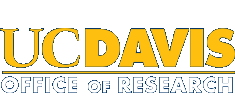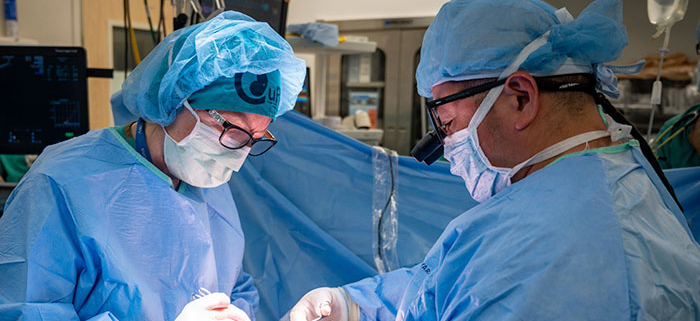UC Davis Scientific Breakthroughs and Innovations Made Possible by Federal Funding in Jeopardy
Research at the University of California, Davis, yields discoveries that not only advance society, but also drive economic growth. These advancements enhance our lives here in California and throughout our nation, with innovations in agriculture, clean energy, artificial intelligence and human and animal health.
As the largest source of funding for research at UC Davis, federal agencies provide the foundation for many of these scientific breakthroughs that produce solutions for a brighter future. The longstanding partnership leverages the broad and deep expertise, unique interdisciplinary collaborations and state-of-the-art resources at UC Davis to bring new technologies and well-paying jobs forward.
Last fiscal year, funding from the federal government contributed $441 million, or 42% of the total research funding received by UC Davis. The National Institutes of Health (NIH) was the largest federal contributor at $276 million. The recent announcement by the NIH to dramatically reduce funds for facility and administration costs (aka indirect costs), as well as any broader reductions in federal research funding jeopardizes future breakthroughs like the following.
Breakthroughs and Innovations Enabled by Federal Funding
#1: Groundbreaking stem cell treatment for spina bifida delivered during fetal surgery
Spina bifida occurs when spinal tissue fails to fuse properly during the early stages of pregnancy, leading to a range of lifelong cognitive, mobility, urinary and bowel disabilities. It affects 1,500 to 2,000 children in the U.S. every year.
Funded in part by the NIH National Institute of Neurological Disorders & Stroke (NINDS), an interdisciplinary team at UC Davis developed a landmark fetal surgery to treat spina bifida prior to birth using stem cells placed directly on the fetus’s spinal cord using a special patch. The novel procedure is being used in the CuRe clinical trial, aiming to reverse the paralysis of spina bifida before birth.
The team generated specially engineered stem cells for the study in the UC Davis stem cell manufacturing facility according to FDA guidelines. They are produced and screened in a highly specialized facility within UC Davis’s Institute for Regenerative Cures in Sacramento.
#2: New brain-computer interface allows man with ALS to ‘speak’ again
A new brain-computer interface (BCI) developed at UC Davis Health translates brain signals into speech with up to 97% accuracy — the most accurate system of its kind.
The new technology is being developed to restore communication for people who can’t speak due to paralysis or neurological conditions like ALS. It can interpret brain signals when the user tries to speak and turns them into text that is ‘spoken’ aloud by the computer. The work was supported by an ALS Pilot Clinical Trial Award from the Office of the Assistant Secretary of Defense for Health Affairs, a New Innovator Award from the NIH and managed by the National Institute on Deafness and Other Communication Disorders.
#3: Animal model opens way to test Alzheimer’s disease therapies
Knowledge of Alzheimer’s disease has grown rapidly in the past few decades, but it has proven difficult to translate fundamental discoveries about the disease into new treatments. Researchers at the California National Primate Research Center at UC Davis have developed a model of the early stages of Alzheimer’s disease in rhesus macaques. The model could allow better testing of new treatments. The work was supported by the NIH through a collaboration between the Office of Research Infrastructure Programs and National Institute of Aging, and by the Alzheimer’s Association.
#4: Genome editing used to create disease resistant rice
Rice is an essential crop that feeds half of the world’s population. Researchers from UC Davis and an international team of scientists used the genome-editing tool CRISPR-Cas to create disease resistant rice plants.
Small-scale field trials showed that the newly created rice variety, developed through genome editing of a newly discovered gene, exhibited both high yields and resistance to the fungus that causes a serious disease called rice blast. The work was supported by the NIH, Department of Energy and the National Science Foundation.
#5: New microscope offers faster, high-resolution brain imaging
Researchers at UC Davis have developed a new microscope to capture high-speed images of brain cell activity with less harm to brain tissue. The new approach could be used in research to provide a clearer view of how neurons communicate in real time, leading to new insights into brain function and neurological diseases.
The microscope is ideally suited for studying the dynamics of neural networks in real time, which is crucial for understanding fundamental brain functions such as learning, memory and decision-making.
The work was funded by the National Science Foundation, the National Institute of Neurological Disorders and Stroke and the National Eye Institute.
Resources
Learn more about federal funding and why facility and administration costs are critical







